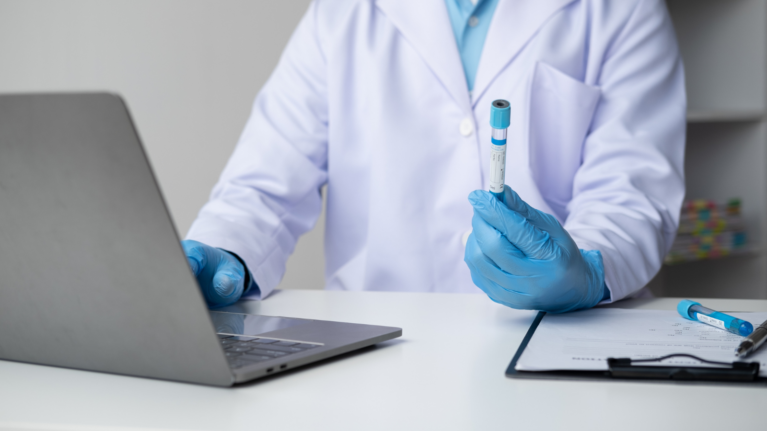

Every scientist knows the frustration of digging through countless Excel spreadsheets and paper notebooks in desperate search of crucial data, forgotten experimental details, and critical reagent locations. As we’ve discussed before, digitizing your lab is how to get around these troubles.
However, sifting through the available options and difficult-to-decode acronyms can be overwhelming.
You may have noticed that most digital platforms for the life sciences are classified as a Laboratory Information Management System (LIMS) or Electronic Lab Notebook (ELN). On paper, they sound the same, but there are some critical distinctions between them. In this blog post, we’ll explore the differences between an ELN and LIMS, discuss their advantages, and provide valuable tips to help you choose the right solution for your lab.
Let’s start by breaking down just what an ELN and LIMS are and their benefits.
An ELN is a software platform designed to record and manage data, observations, sample information, and experimental methods that one would conventionally scribble into a paper lab notebook. ELNs are an excellent solution for keeping up with growing regulatory pressures to maintain data integrity and security. Moreover, they allow you to easily collaborate with team members, record experimental observations, integrate with instruments, create detailed reports, and search using simple keyword queries.
In contrast to an ELN, LIMS is software designed to manage and automate laboratory workflows and operations. It is ideal for running repetitive testing or working in a quality assurance or biobanking lab since it minimizes the probability of human errors. Moreover, they allow you to track samples (and associated metadata), attach instrument records to samples, create basic analytical reports, and manage lab tasks and inventory.
While ELNs and LIMS are digital software platforms for laboratory data management, the two have some significant differences. ELNs are designed for many of the same functions as traditional paper notebooks, such as recording experimental protocols with the added benefits of searchability, data organization, and collaboration tools. LIMS functions focus on streamlining repetitive tasks and workflows from sample tracking to data analysis and reporting. They are typically used by large laboratories that manage lots of samples and data.
Now that you know the main features, benefits, and differences between ELNs and LIMS, it is time to decide which solution is right for you.
In short, choosing a software solution that fits your and your labs’ needs is best.
But what are those needs? The first thing is to meet with everyone who will use the ELN or LIMS software and better understand what they will be using it for. Are you looking to track samples from routine and well-defined tests? Or are you looking to organize notes, protocols, and data from experiments? If team collaboration is essential to your organization, an ELN may be the way to go.
Next, consider the industry you work in. For instance, biotech and pharma companies doing drug discovery or early-stage development testing may find an ELN a more suitable solution. In other laboratory environments, like a QC or QA facility, a LIMS may be better suited for your tasks.
Moreover, consider the regulatory environment your lab is operating in. If you work in a standardized environment where workflow is predetermined and not very flexible, a LIMS is likely a better option.
Lastly, ELNs and LIMS come with very different price tags. If budget is a concern, research beforehand and get an accurate quote to get the most value for your money.
The webinar will provide an outline of the differences between LIMS and ELNs, and how you to decide which one is more suitable for your lab.
You will learn:
Ultimately, the choice between a LIMS and ELN will largely depend on what you’re trying to accomplish, your primary lab needs, your work and regulatory environment, and your budget. Understanding what each system does can drastically help guide your decision. And as the next generation of holistic digital lab software and AI-driven solutions enter the life science market, the problems that can be solved using these platforms will evolve and change, further streamlining laboratory operations.
If you want to learn more about how eLabNext’s digital lab solutions accelerate progress in the life sciences industry, schedule a personal demo today.

 By Ethan Sagin
By Ethan Sagin
Learn how eLabNext utilizes impact-driven metrics and assessments to optimize digital operations, enhance customer satisfaction, and achieve lab digitization goals effectively.
Read more
 By Zareh Zurabyan
By Zareh Zurabyan
Discover the transformative power of a Sample and Digital Strategy, and follow our 5 easy steps to prep for a seamless ELN/LIMS transition.
Read more
 By Chris Austin
By Chris Austin
Discover the ongoing debate between paper and ELNs in research institutions, weighing the simplicity and tangibility of paper against the efficiency and collaboration-enhancing features of ELNs.
Read more
Schedule a Personal Demo for friendly expert guidance and a free lab workflow assessment.